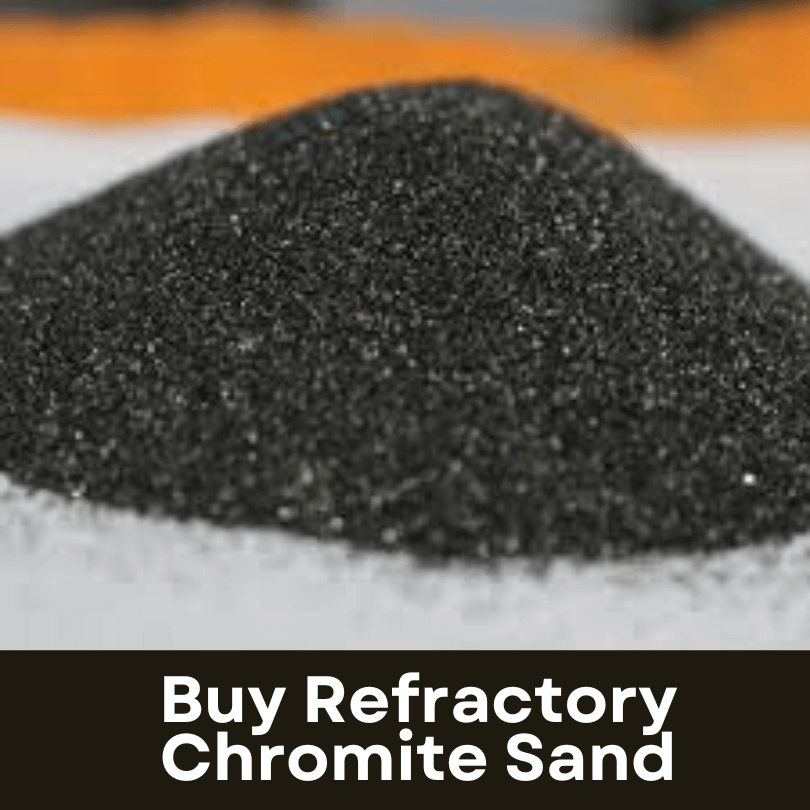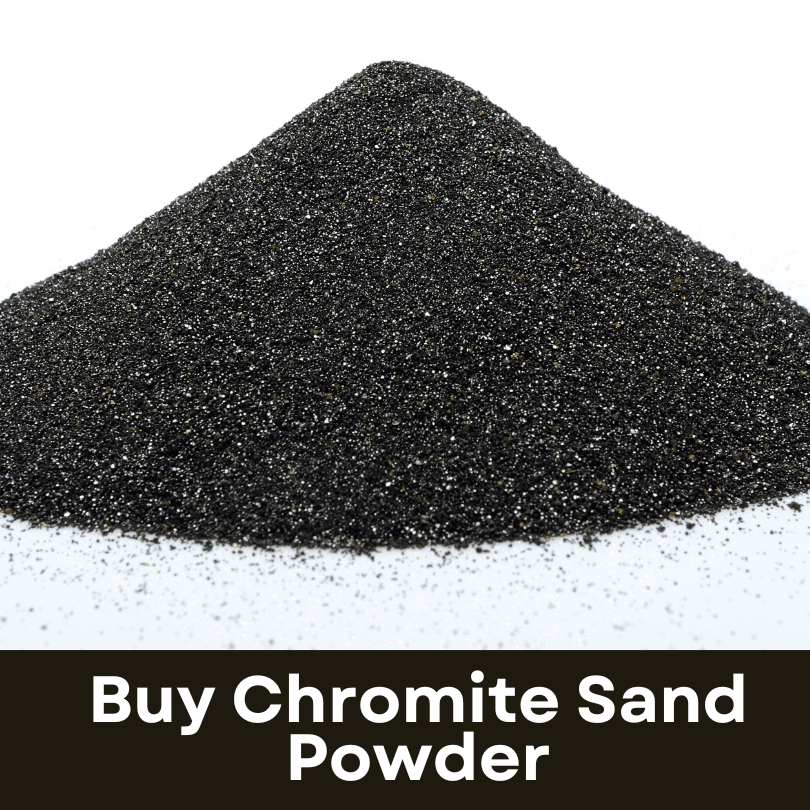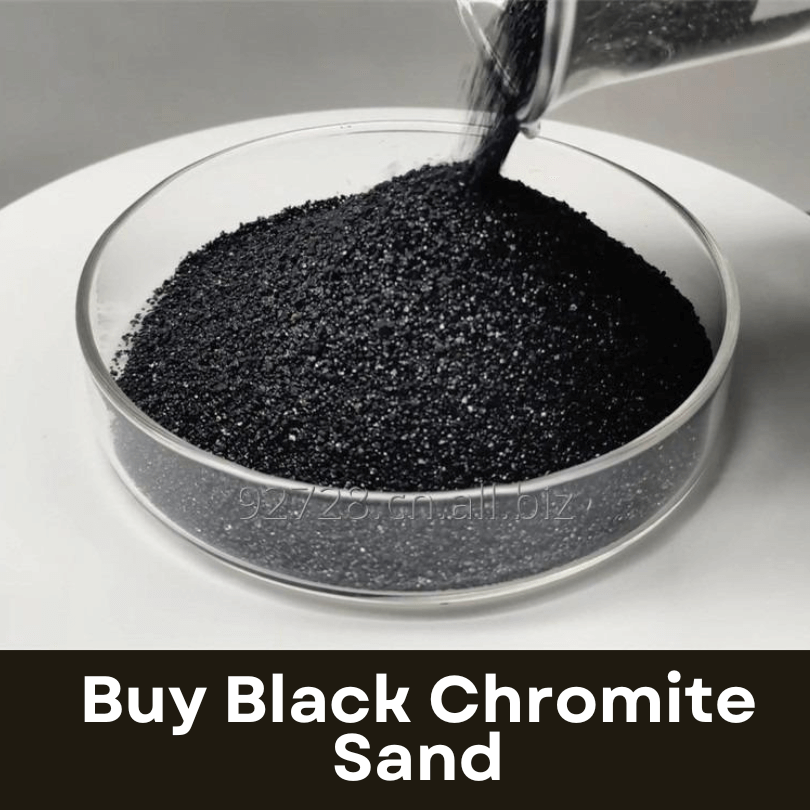Quality Assurance:
We supply the best Iranian chromite available, sourced from the finest suppliers in the country. Various analyzing milestones, including onsite analysis by reputable centers in Iran, Bandar-Abass analysis conducted by the world's leading testing company SGS, and destination analysis by CIQ, will be performed at different times to ensure order quality and quantity.
Price Assurance:
Iran Chromite group can supply an infinite amount of chromite at the lowest market price, thanks to their strong relationships with over 100 suppliers and miners. You don't have to believe us, compare our price with other suppliers and see for yourself. Don't hesitate to reach out to us today for a quote.
A legally robust contract.
Upon reaching a consensus on the commercial and technical aspects, a comprehensive contract will be issued along with a final invoice and a receipt confirming payment. These documents will serve as substantial evidence for any legal entities in Iran.
Get Sample First!
We offer a sample of 50 MT of any products you want for orders above 500 MT. Test the product first and ensure the quality and then place your order.
The Ultimate Guide to Buy chromite sand: Why, Where, and How to Buy
Introduction:Buy Chromite Sand
What is Chromite Sand?
Why buy Chromite sand? It’s a valuable mineral, but what exactly is it? Essentially, it’s a natural spinel that consists mostly of chromite and ferric oxide minerals. Think of it as the result of combining chrome ore, silica, and sometimes small amounts of alumina. The unique thermal expansion of these tiny grains makes them a favorite in numerous industries. Its high thermal conductivity and refractoriness make it stand out, while its color ranges from dark gray to black.
Contact IranChromite sales to get the best market price and highest quality for chromite sand quotes.
Importance of Chromite Sand in Various Industries
Chromite sand plays a pivotal role in several industries – and for good reasons! First and foremost, the foundry industry swears by it. When you’re casting metals, especially high-grade steel and iron, the high heat resistance and thermal conductivity of chromite sand is a godsend. It’s like the star player on a football team – always reliable.
Apart from foundries, it’s got a big role in the refractory industry as well. Think of all those bricks lining furnaces, ladles, and whatnot – many of them have chromite in them. It helps enhance their durability against corrosion, wear and tear, and heat.
But it’s not just about heat and metals. The glass-making industry loves chromite too. Those tinted green or black glasses – yup, chromite’s handiwork.
You may also like: The Ultimate Guide on Chrome Ore Fine: From Basics to Advanced Insights
Check out the page for available chromite mines for sale or cooperation (High grade and low grade Cr2O3).
Origins and Composition of Chromite Sand
Natural Formation of Chromite
Chromite, right, is a mineral that originates deep within the Earth’s crust. Imagine it: molten magma, bubbling up, containing a myriad of minerals and elements. As this magma cools and solidifies, heavier minerals – chromite being one of them – settle down and concentrate at the bottom. Over time and with a good ol’ touch of geological magic, these deposits are unearthed and become accessible for mining. I often marvel at nature’s way of crafting such a precious substance. The feeling of seeing these deposits, knowing the history behind their formation, truly never gets old.
The Chemical Makeup of Chromite Sand
At its core, chromite sand is mainly composed of iron, chromium, and oxygen. Think of it as FeCr2O4, if you fancy chemical formulas. But there’s more to it than just that – you see, the specific ratio of these elements can vary, leading to slightly different properties in the chromite. And, trust me, when you’re dealing with exporting this sand to various countries, you better be sure of what you’re sending over. Some folks might want a higher chromium content for their specific needs, while others might be looking at other properties.
Benefits of Using Chromite Sand
Chromite sand, I’ve seen first-hand the incredible advantages of this underrated resource, especially in the realm of metallurgy. Let’s dive right into what makes it so special!
Thermal Stability and Heat Transfer Properties
This sand has a stellar thermal stability, which, in layman’s terms, means it can withstand high temperatures without degrading. Think of it this way – it’s like having a superhero shield against the extreme heat. In addition, its heat transfer properties are, well, top-notch. It’s able to conduct and retain heat efficiently, making it invaluable in casting applications. And Its high melting point ensures fewer defects in the final product.
Resistance to Metal Penetration
Chromite sand’s dense grain structure means it has a fantastic resistance to metal penetration. In the world of casting, the last thing you’d want is for metal to seep into the sand mold’s tiny crevices. It could ruin the entire product! Thankfully, with chromite sand, that’s not a concern you’d typically have. It’s like having a sturdy wall – no unwanted guests getting through!
Environmental Advantages
Well, chromite sand doesn’t disappoint in this arena either. It’s a naturally occurring mineral, which makes it environmentally friendly. Plus, its non-toxic nature means it won’t release harmful substances into the environment when used in foundries. So not only are you getting a top-quality product, but you’re also doing Mother Earth a solid. Win-win, I’d say!
Applications of Chromite Sand
Foundry Industry
Chromite sand is very popular in the foundry industry because of its high thermal conductivity and resistance to thermal shock. It’s used primarily as a molding material in the foundry industry. When casting metals like steel and iron, chromite sand ensures minimal metal penetration and surface defects. I remember my awe when I first saw its resilience against the fiery forges. It just doesn’t get burned out! That resilience can mean the difference between a flawless product and a costly mistake. Feeling that warm mold and seeing the perfect outcome?
Refractories and Ceramics
Chromite sand’s high melting point makes it a darling in the refractory industry. Used in the production of magnesia-chromite bricks, ladle bricks, and other refractory products, this sand ensures durability and longevity. I’ve seen furnaces lined with these bricks, and boy, they can withstand some serious heat! Moreover, in the ceramics world, chromite helps in achieving that glossy finish we all love on our vases and pots. So, next time you admire a shiny ceramic piece, just remember – chromite might’ve had a hand in it.
High-Performance Fillers
In the world of plastics and polymers – chromite sand steps up as a high-performance filler. Thanks to its unique properties, like its specific gravity and particle shape, it enhances the final product’s durability and performance. Ever had that moment where you thought, “Wow, this plastic feels quality”? Yeah, you might have chromite to thank for that sturdiness.
Factors to Consider Before Buying Chromite Sand
Purity and Quality
The number one thing I’ve always harped on about is the purity and quality of chromite sand. It’s not just about digging up the stuff and selling it. Nah, it’s much more intricate than that. Purity and quality can vary significantly based on numerous factors. When I’m looking to purchase, I always make sure I’m getting the best bang for my buck – and you should too! The chromite should have minimal impurities, ensuring you get the purest form of the mineral.
Grain Size and Distribution
This might sound all too technical, but bear with me. The grain size can greatly influence the sand’s usability in various applications. From foundry work to metallurgical processes, the grain size matters! Having a consistent grain size ensures smoother operations and better results. I’ve seen too many operations face setbacks because they overlooked this simple yet crucial aspect. It’s akin to trying to make a puzzle fit with mismatched pieces . Quite the challenge , wouldn’t you agree?
Source and Origin
You might be wondering, “Why does it matter where chromite sand comes from?” Well, let me enlighten you. Different geographical locations have varying compositions of chromite. It’s a wild world out there, and the environmental conditions, geology, and extraction methods can all play a role in the final product.It gives insight into its quality, environmental impact, and overall trustworthiness of the supplier.
Global Market Overview
Major Chromite Sand Producing Regions
So, where does this beautiful sand come from? Well, South Africa, hands down, leads the pack. It’s the behemoth when it comes to chromite sand production. But let’s not forget countries like Turkey, India, and Kazakhstan – they’re stepping up their game too. I’ve had the privilege of visiting many mines across these regions, and the passion and technology in play – ah, it’s mind-blowing!
In Iran, there are also excellent factories that produce high tonnage of chromite sand.
Demand and Supply Dynamics
The demand for chromite sand is majorly driven by the foundry and metallurgical industries. And as global infrastructure development keeps chugging along, this demand is only going up. But here’s a catch: with increasing demand, we’ve seen some hiccups in supply chains—mines depleting, geopolitical factors, y’know, the works. It’s been a rollercoaster, to say the least. The dynamics are ever-evolving, and it’s crucial to keep one’s ear to the ground.
Pricing Trends
Prices for chromite have seen ups and downs—like a heart monitor! Largely, the price depends on the grade and purity. And with rising demand and sometimes unpredictable supply factors, prices have been on an upward trend lately. Still, market fluctuations are par for the course.
On the flip side, as exploration technologies improve and new reserves are discovered, there’s hope that prices might stabilize.
Best Practices for Storage and Handling
Proper Storage Techniques
You see, incorrect storage can degrade its quality significantly.First and foremost, chromite sand must be stored in a dry environment. It’s highly sensitive to moisture. Now, I remember working on an export once, and the consignment was stored in a damp warehouse. Not the brightest idea, huh? By the time it reached its destination, the quality had deteriorated. A complete nightmare! So, always, and I mean always, choose a place with minimal humidity.
Ventilation is another crucial factor. The area where you store it should have proper air circulation to prevent any potential fungal growth. Stack bags off the floor on pallets and ensure that they aren’t leaning against walls. It allows air to circulate around them.
Safety Measures for Handling
Handling chromite sand – well, that’s an art in itself! Over the years, I’ve seen quite a few mishaps due to folks not taking the proper precautions.
Wearing the right PPE (Personal Protective Equipment) is a no-brainer. Dust masks are a must when you’re dealing with any mineral, including chromite. These masks prevent the inhalation of the fine particles.
Gloves are another essential. Not only do they protect your hands from the rough texture of the sand, but they also reduce the chance of skin irritation. Chromite sand, though not highly toxic, can be a tad abrasive.
Lastly, and this might sound a tad dramatic, but always be aware of your surroundings when transporting or handling bags. Dropping a bag or having one fall over can cause a massive mess. Not to mention, it’s a waste of precious mineral!
Why is Chromite Sand preferred in the foundry industry?
First off – its thermal conductivity. Chromite sand has this remarkable ability to withstand high temperatures. Think of it as that friend who never sweats even in the sweltering summer heat – quite a trooper! This characteristic makes it a top choice for molds since it prevents them from deforming under extreme heat.
Chromite’s melting point is way above the melting temperatures of most metals. So, when metal is poured into molds, chromite sand stands firm – like a rock in a storm. This ensures a smoother casting process and let’s not forget its low thermal expansion. Lesser expansion means reduced chances of casting defects. And trust me, in the foundry world, that’s like striking gold!
Another feather in chromite’s cap is Its density. This sand is denser than other sands, like silica, which means it fills up mold cavities more effectively. It’s like using a snug-fitting glove instead of a one-size-fits-all – just more efficient and precise!
The best one; Its resistance to acidic environments. I’ve seen foundries where the metal being cast can be pretty reactive. And in those cases, chromite sand, with its solid resistance to acids, is a lifesaver.
What Are the Key Differences Between Chromite Sand and Other Foundry Sands?
First and foremost, the color – chromite sand is distinctively darker, mostly a deep black. It’s a contrast to the typical tan or golden shades of other foundry sands like silica or olivine. This is due to its rich content of the mineral chromite, which – fun fact – is the source of chromium used in stainless steel and chrome plating.
But it’s not just about the looks! The thermal conductivity of chromite sand is significantly lower than most other sands used in foundries. What does that mean for you and me? It implies that chromite sand is resistant to the intense temperatures in metal casting processes. So, when molten metal is poured into molds with chromite as the molding material, the chances of burn-on and penetration defects are much lower.
And don’t even get me started on the pH levels. Unlike other foundries’ sands, chromite sand is neutral in pH . A godsend, really, especially when we’re talking about casting metals that react with acidic or basic molding materials. The neutral pH reduces chemical reactions between the sand and the metal, resulting in cleaner and more flawless castings.
Now, you might wonder, with all these benefits, why isn’t everyone using chromite sand? Well, it’s often about the cost. Chromite sand can be pricier than other alternatives, and sometimes, the specific requirements of a casting process might not demand its unique properties. So, as with everything in life, it’s about finding the right balance.
Summary: Buy Chromite Sand
Why buy chromite sand? Chromite sand, with its high heat resistance and unique properties, is an absolute game-changer in foundry applications. Over my decade in the mining industry, I’ve watched countless clients rave about its thermal conductivity and low thermal expansion. It’s a hot commodity – literally and figuratively! It has this uncanny ability to withstand extremely high temperatures without losing its grit. Pardon the pun! And it’s not just for the foundries. Its lustrous black color gives it a solid spot in the refractory industry as well.




